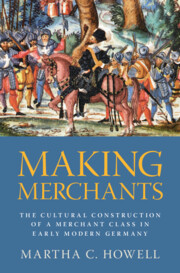Bibliography
Published online by Cambridge University Press: 19 September 2025
Information
- Type
- Chapter
- Information
- Making MerchantsThe Cultural Construction of a Merchant Class in Early Modern Germany, pp. 210 - 229Publisher: Cambridge University PressPrint publication year: 2025
